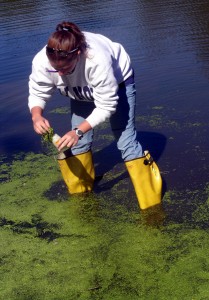Discovering Lake Management: Getting Students’ Feet Wet

Originally appears in the Winter 2007 issue
Teaching about lake management is an exciting way of getting students interested in the environment. It offers hands-on opportunities for students of all ages to learn about the biology and chemistry of lakes. This article offers instruction for three field activities that allow students to evaluate the health of a lake and learn the basics of lake management through a classroom debate.
Humans rely on lakes for many reasons, including drinking water, cropland irrigation, and recreation. Additionally, lakes provide habitat for a variety of aquatic life, such as fish, microscopic animals called zooplankton, aquatic plants, and algae. The dependence on lakes of such a diversity of aquatic life, not to mention humans and terrestrial organisms, suggests the need for proper management. In Canada, the Canada Water Act is the most comprehensive legislation governing the quality and use of water resources. In the United States, water quality is preserved by the Clean Water Act, and both countries support the Great Lakes Water Quality Agreement to preserve water quality in the Great Lakes. However, lake management does not begin or end with formal legislation. Managing a lake requires the collaboration of many individuals, from those whose activities directly affect the lake to experts in chemistry, biology, natural resource management, and socio-economics.
This content is restricted to subscribers only.
If you are not yet a subscriber, please consider taking out a subscription here.
If you are an existing subscriber, kindly log in or contact us at info@greenteacher.com for more information.





